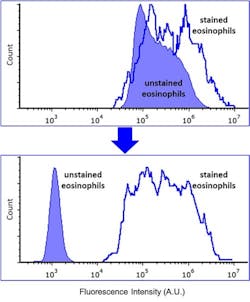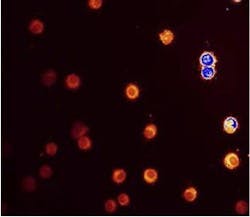Kinetic River completes another NIH Phase I SBIR grant
Flow cytometry instrumentation developer Kinetic River (Mountain View, CA) has completed another Small Business Innovation Research (SBIR) project funded by the National Institutes of Health (NIH; Bethesda, MD). The competitive Phase I grant was awarded to the company by the National Institute of General Medical Sciences (NIGMS; also in Bethesda), which fosters research focused on development of innovative biomedical diagnostic and therapeutic platforms.
Flow cytometry is a powerful cell analysis tool with broad utility in research and clinical fields as diverse and important as tumor biology research, cancer and AIDS diagnostics, immunophenotyping, and cancer immunotherapy. Flow cytometry relies heavily on adding fluorescent labels to cells. Accurate measurements of this externally added fluorescence is hindered by the presence of cellular autofluorescence, a nearly ubiquitous endogenous fluorescence inherent to the cells themselves.
The NIH SBIR award funded the development of Kinetic River’s Colorado automated autofluorescence removal technology. Based on the company’s time-resolved flow cytometry technology, the Colorado retains a familiar workflow for the end user, while delivering improved data. By achieving all planned milestones, the company has paved the way for further development and commercialization of this technology.“Through a combination of hardware and algorithm development, we have been able to demonstrate the removal of the autofluorescence contribution from a population of exogenously stained eosinophils—a cell type with notoriously high autofluorescence signal. The ability to get cleaner signals from such cells will ultimately lead to higher quality data without altering the end-user workflow,” explains Giacomo Vacca, Ph.D., president of Kinetic River.
The successful Phase I program paves the way for further development and commercialization of a 4-laser, 16-channel Colorado instrument with fully automated removal of the contribution from cellular autofluorescence. This is the goal of a Phase II SBIR proposal recently submitted to the NIH.
Source: Kinetic River press release via PR Newswire – March 24, 2021

